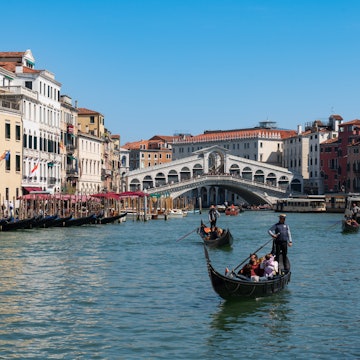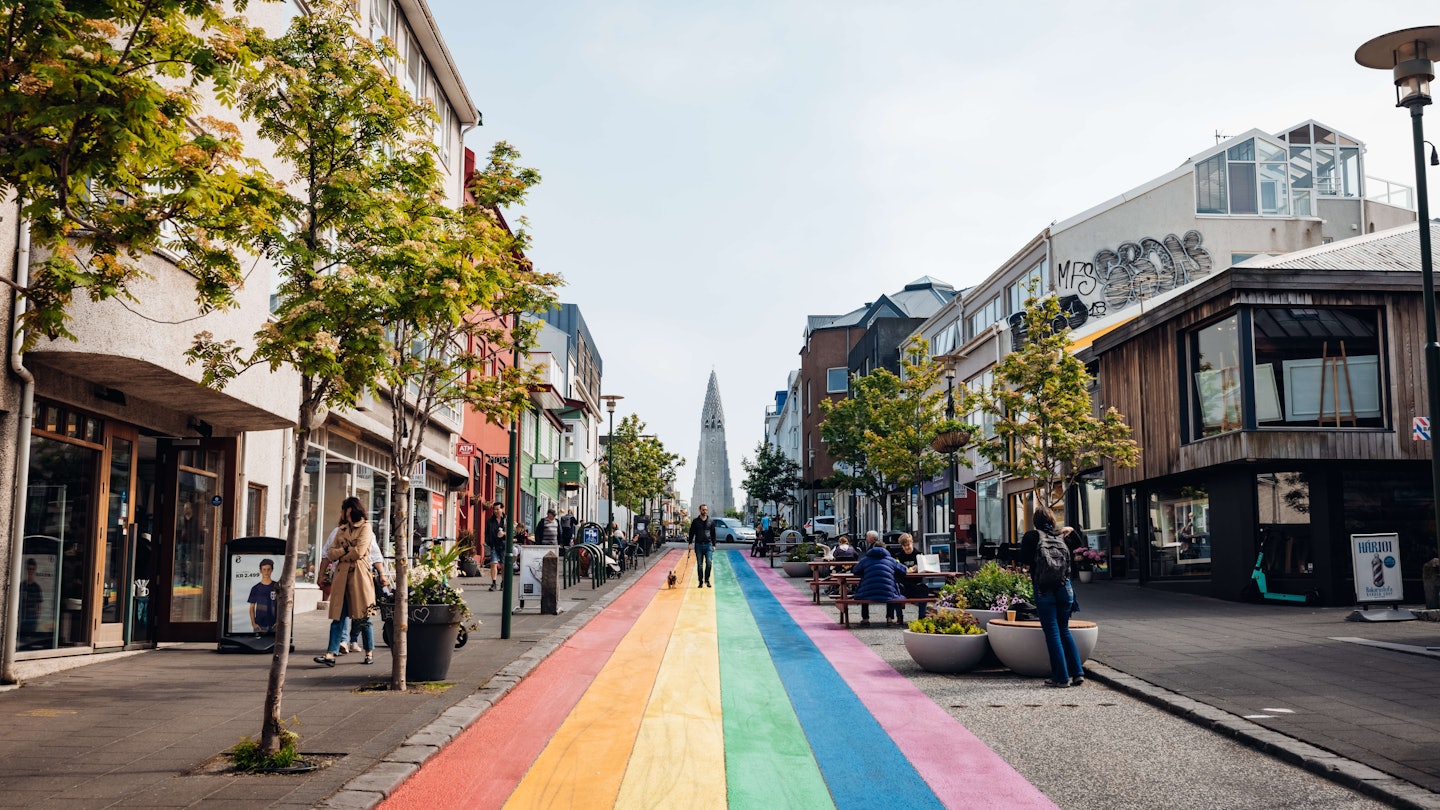

From transportation to food to a pass that unlocks discounts on must-sees, here’s how to save cash in Reykjavík © Finn Hafemann / Getty Images
Iceland’s capital requires some capital. Ranking high on many “most expensive cities in Europe” lists, Reykjavík is not cheap.
As with any Icelandic destination, it is oh-so-easy to be lured in with a flight that may be comparatively affordable to other continental destinations. But once your boots are on the ground, this volcanically morphed peninsula of a city can feel like a totally unplanned spending spree.
Many factors contribute to this, including the need to import goods to the island nation, plus high taxes and high average wages for the population of 200,000-plus living throughout the Greater Reykjavík region.
But there are ways to save money in Reykjavík, and everyday transactions are where you'll see the most opportunities, including transportation, food and passes for the biggest attractions. Here are some tips as you enjoy the city’s bayside landscape, and the friendly locals living within it.

For better deals, steer clear of the summer months
June through August are pure bliss in Reykjavík and beyond. Temperatures are the warmest all year (with highs in the mid-50s°F), and the “midnight sun” radiates for 20-plus hours a day. This is when folks flock to the city, so things are more expensive. January through May is the timeframe for discounted flights and lodging.
Book your hotel as far in advance as possible
As much of a tourism hotspot as Reykjavík can be, it doesn't have an endless supply of lodging options, or discount hotel sites to speak of. Whether you're looking at a chain hotel (Icelandair and Fosshotel being popular), a boutique option or an Airbnb or guesthouse, book well in advance. Waiting until you get to Reykjavík won’t save you money, and you may not have any options at the last minute.
Fly to Reykjavík and weigh your options
To reach Reykjavík from international destinations in North America and Europe, Icelandair remains the go-to. Iceland’s flag-bearing carrier is headquartered outside of the capital at Keflavík International Airport, where it has hundreds of nonstop and connecting flights per week.
Twenty-three other airlines operate out of the airport as well, including European budget carriers Play, EasyJet and Wizz. Keep an eye on bargain fares from the discount carriers, but make sure to read the fine print for any in-flight or baggage up-charges.
Get to the city center by bus
Keflavík International Airport is located approximately 50km (31 miles) southwest of Reykjavík's urban core. This can equate to a hefty taxi or shuttle fee and take approximately 45 minutes, so the airport is a great spot to get acquainted with the bus system, or Strætó.
The ride may take a little bit longer – typically an hour and 10 minutes – but line 55 goes back and forth between the airport and city center, with one-way fares running approximately $15. Beyond line 55, Strætó has more than 50 total routes throughout the region, with buses often stopping every 15 minutes on weekdays and 30 minutes on weekends.
Pass on the bottled water
While “don’t drink the tap water” is a mantra that should absolutely be adhered to in some destinations, this is not one of them. Reykjavík has some of the purest water of any city you’ll find, generated from Iceland’s untouched springs. So save the $3 to $4 per bottle – it’s not necessary here.
Walk around the city (or take a free walking tour)
Reykjavík is a very walkable city, where you can be to the Hallgrímskirkja cathedral, Hljómskála Park and museums galore in a matter of minutes. Guided walking tours can help you get your bearings, and there are several around the city for a fee; of the free options, CityWalk is among the best. Just make sure to tip your guide.

Opt for a much, much smaller geothermal experience
Approximately 50km (31 miles) southwest of central Reykjavík, the Blue Lagoon gets a lot of Instagram love. But you don’t have to venture out of the city’s confines to get your geothermal spa on. The Grottá Hot Pool is a much more intimate option, situated in the coastal town of Grottá with a white lighthouse. It’s just 5km (3 miles) northwest of the city center.
Snag a Reykjavík City Card for major savings on big attractions
If pools, museums and bus travel are all on the Reykjavík itinerary, the Reykjavík City Card is a no-brainer. With 24-, 48- and 72-hour options, the card grants holders free entry into all of the city’s swimming pools, free bus travel (excluding the airport route) and complimentary entry at select museums. The cost of a 24-hour pass is roughly $30.
Buy your booze strategically
Iceland has one of the highest alcohol taxes in the world – upwards of 75% of the purchase price of a bottle of booze – so if you're going to have a bottle of vino or Brennivín on hand for your Reykjavík adventure, you may want to stock up at the airport’s duty-free stores. Otherwise, keep an eye on happy hours – often during the 4pm to 7pm time frame – along the pub-clad Laugavegur street and surrounding areas.

Snag the "best hot dog in town" on the fly
Street food is on the rise in Reykjavík, with food halls, such as Hlemmur Mathöll and the Old Harbour’s Grandi Mathöll, taking center stage.
Often made with Icelandic lamb, hot dogs are an inexpensive cultural experience here. The unassuming Bæjarins Beztu Pylsur – translating to “the best hot dog in town” – remains an on-the-go heavyweight and has seven locations throughout the city. A hot dog and soda runs less than $6.
Shop the Kolaportið marketplace
Sure, there are pricey shopping options aplenty in the Kringlan mega mall and along Laugavegur. But for price-conscious keepsakes, handmade Icelandic goods and local food, the Kolaportið marketplace is as uniquely Reykjavík as it gets. It’s across the street from Reykjavík Harbor and Reykjavík Art Museum’s Hafnarhús, and open on weekends.
Daily costs
Hostel room: $45–50
Basic room for two: $160–175
Self-catering apartment (including Airbnb): $225–250
Public transport ticket: $3.50
Coffee: $4–6
Sandwich: $10–15
Dinner for two: $90–100
Beer/pint at the bar: $7.50–10
















